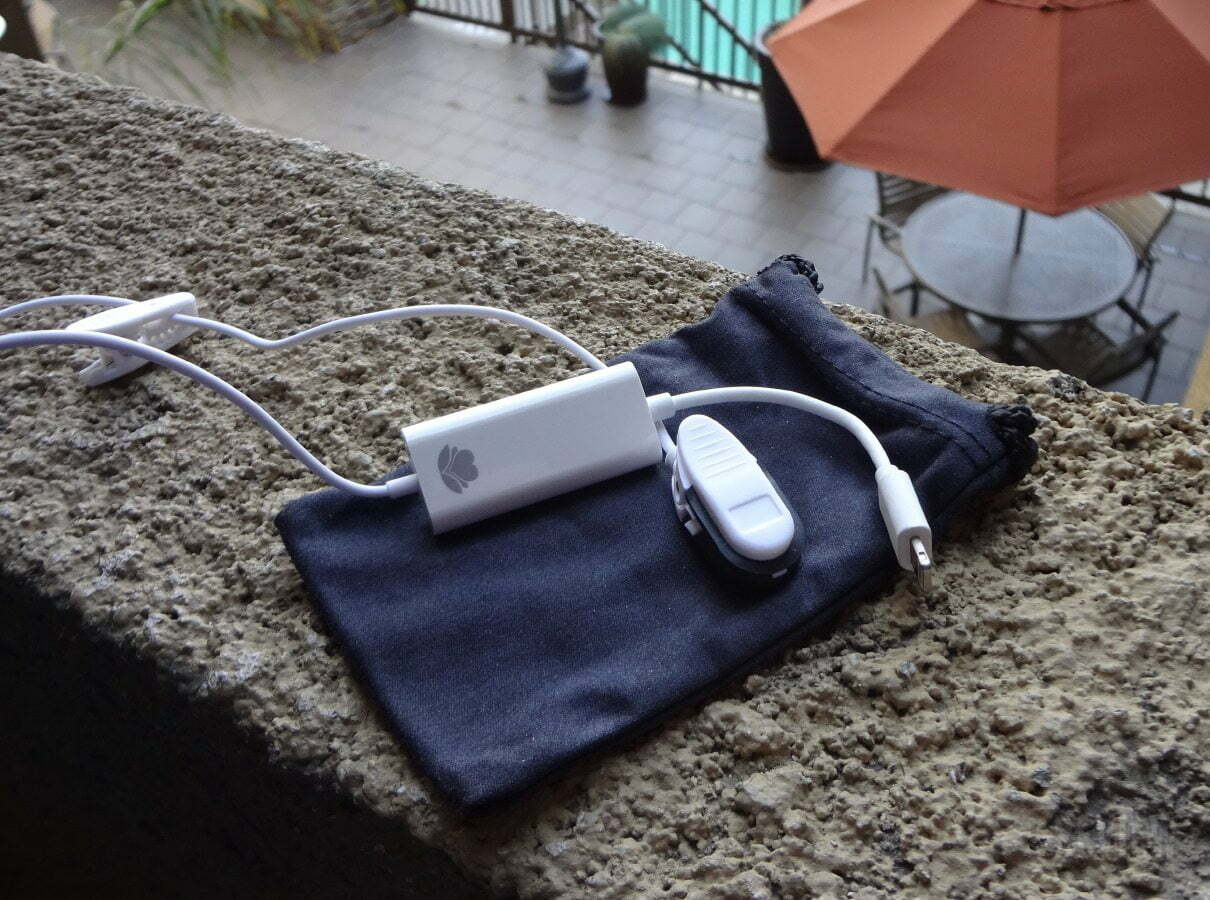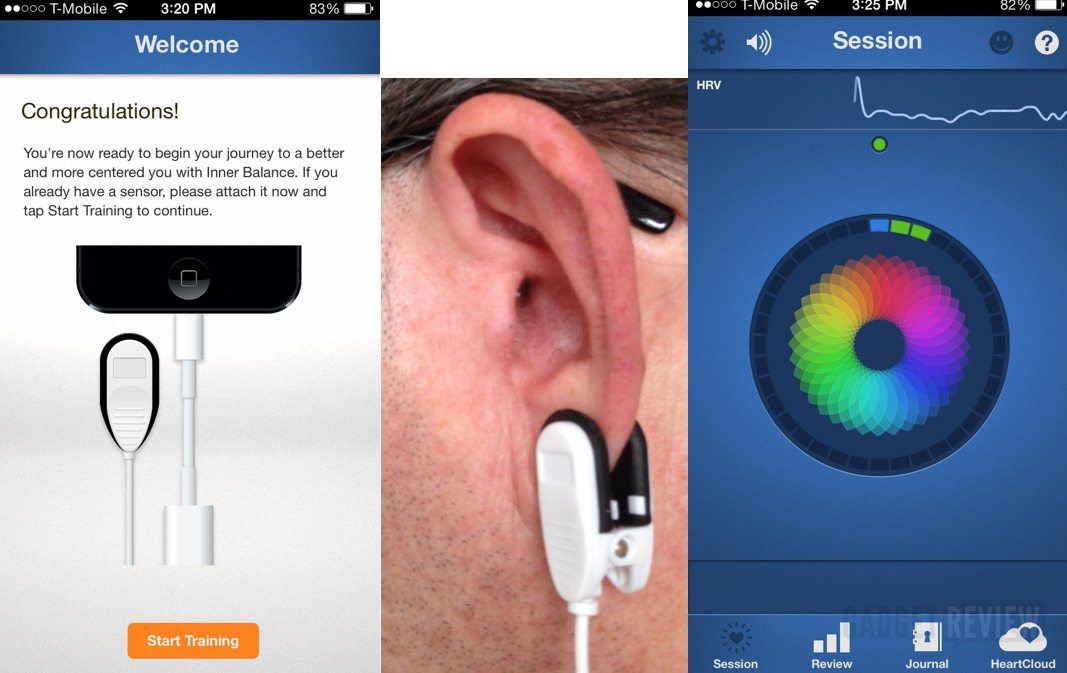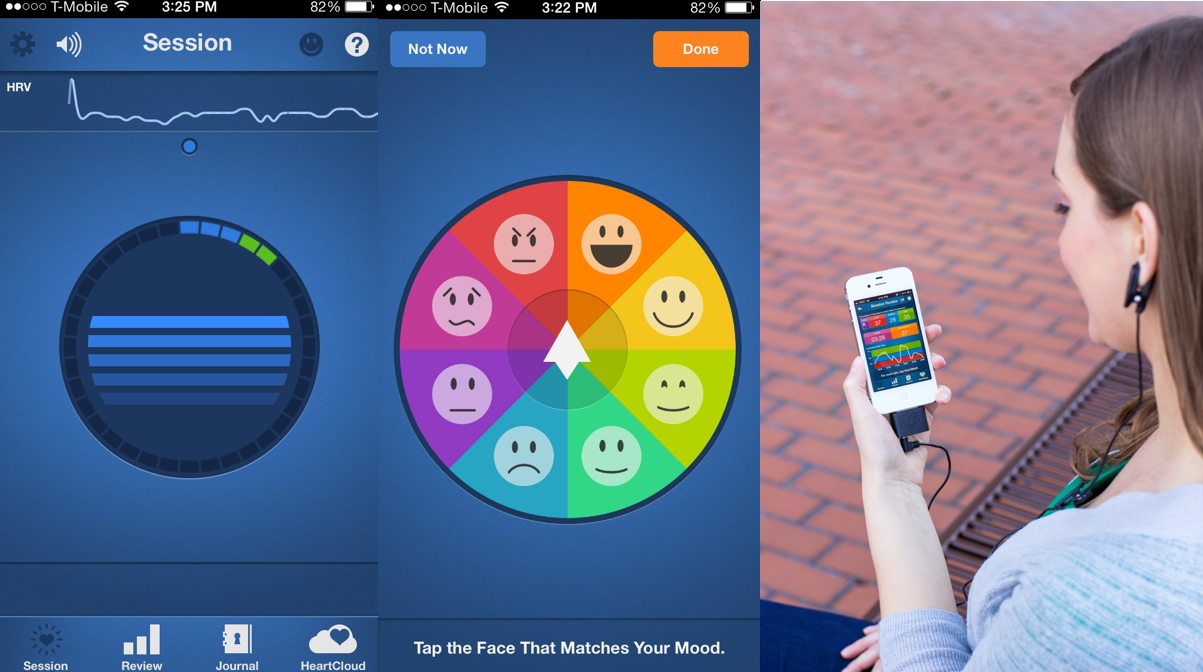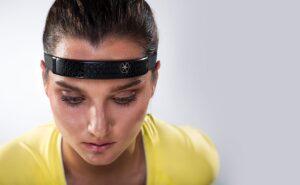[dropcap]S[/dropcap]ome people are naturally more nervous than others — but who doesn’t have something bothering them on some level, whether that’s a significant other, a job, the weather…you name it? Part of 21st Century life is being bothered by something, and while that might be great for those who sell blood pressure pills, not so for one’s health overall. So forget about Yoga or meditating while staring at the ceiling (or ignoring the problems altogether) and give HeartMath’s Inner Balance Senssor a try. And since the sensor clips to the base of the ear (the earlobe), and I don’t have earlobes — well that’s just more stress that I’ll have to deal with in reviewing it. But all jokes aside, getting one’s stress under control can be a huge benefit and if Inner Balance can help me do this without a lot of “new age” nonsense, I’ll all for it. Since it works through tech — the hardware consists of a module that connects to the iOS device through a Lightning connector for use on compatible iPhones/iPads (30-pin version available also), in conjunction with a free app, well I’m all for that.
Designed to work in tandem with an iPhone, one end of the Inner Balance cable goes into either the Dock or Lightning connector (specific model for each), with the sensor end clipped to the earlobe for readings. This is non-invasive and barely noticeable, which means that the sensor can be worn for an extended period of time without incident. Pulse readings are taken from the earlobe and transferred into the free app that is first downloaded from Apple’s App store.
I was curious to see how Inner Balance functioned as a means for controlling stress — which is to say it would provide the information as to how I was feeling at a given time and then, through its monitoring and app’s functions, enable me to alter my attitudes so as to be less stressed. I realized that in order to do this I would first need to do some ongoing monitoring over a period of time and so planned to use the Inner Balance Sensor on a regular basis for the short time that I was allocated to having it.
The overview that the app began with helps to familiarize one with the purpose and functionality of Inner Balance. Then it’s a matter of picking a session that will monitor and present your heart rate, along with predetermined content designed to “coach” the person through. Control of the app involves tapping, with pulse and then a heart rate variability (HRV) pattern taking over. A large “wheel” dead-center guides in controlling breathing , with colored squares added to the graphics as a means of time spent and data collected as to time, pulse, heart rate and others. A breath pacer graphic (ball) is also onscreen and I found myself staring at this more often than not during a session — stand-alone “breathing pacers” can also be enacted and used.
HeathMath is a system of training that has been in effect for 20+ years, and so the app’s use of the techniques reflects a high level of sophistication that has been modulated to avoid being a challenge to even the most novice user. I found the conscious act of controlling my mood a positive one, and obviously it was helped along by more than just my thinking about it — being able to see specific content and data relating to what I was doing was definitely an aid. Inner Balance might say that they’ve proven techniques (what the app has) for reducing stress, but it’s the act of doing it — reinforced by the sensor’s real-time data translated to onscreen — that makes the difference between enacting a positive emotional response and just sitting in a chair telling oneself to breath and “feel better.”
Worth pointing out is that the Coherence state that is stressed throughout is both physically and psychologically distinct from the state reached through most relaxation techniques. To simplify, unlike relaxation, the Coherence state doesn’t necessarily involve a lowering heart rate, or a change in the amount of HRV, but is primarily noted by a change in the heart rhythm pattern — actively engaging positive emotions and being calm, balanced in a manner that is conducive to continued engagement with the world around one. Fortunately it’s not necessary to have a high understanding of all this in order to use the HeartMath functions, but it’s interesting that so much revolves around the heart — even as modern science shattered the beliefs that it held the seat of a person’s humanity.
The use of an online server (i.e., the “Cloud”) facilitates more information — here it is called “HeartCloud” and the free service syncs with the app and what it is reading to provide tracking information as well as social media options. I found this a useful addition to the included procedures that the app provided, although I personally wasn’t that interested in gaining achievement “awards” for using it (I can see this form of positive reinforcement being valid however, just not for me). I did find the colorful charts that provided session information both attractive and easy to read. And I could see how the data sharing abilities could prove highly useful to health professionals.
Bottom line: HearthMath’s Inner Balance Sensor provides the necessary feedback, but it’s the coupling with the app and functions that provides a real value to the user. Scientifically validated techniques vie with gear and a mobile device to make “feeling better” something that can be strived for and reached with visual results.



![7 Best Pulse Oximeters For Your Fingertip in [year] 1 Best Pulse Oximeters For Your Fingertip](https://www.gadgetreview.dev/wp-content/uploads/best-pulse-oximeters-for-your-fingertip-300x169.jpg)

